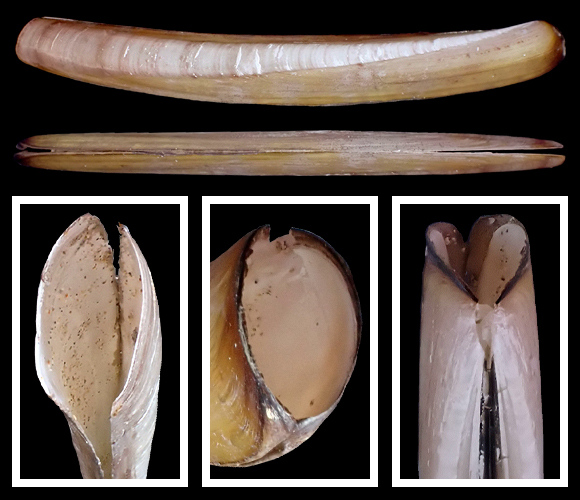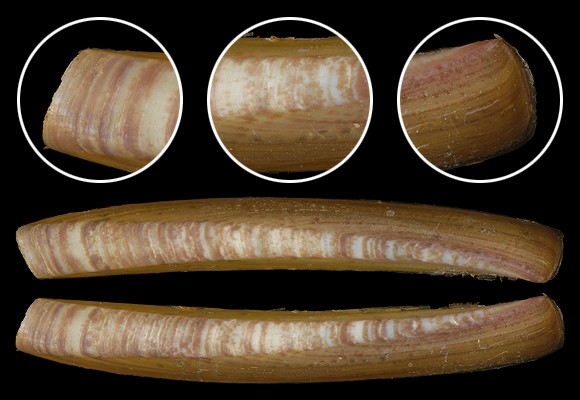
In sand, from low intertidal to sublittoral.
Original taxon: Solen ensis.
Synonyms: europaea, phaxoides, sicula. One of the most curved Pharidae, with the shape of a katana – hence the name.
Above and below: 50cm deep, on sand, Almería, Andalucia, S. Spain. 100mm.
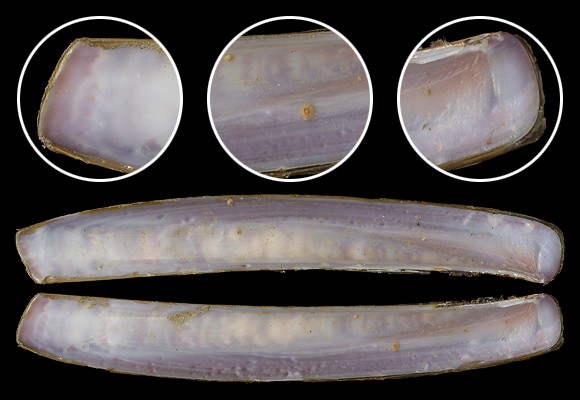
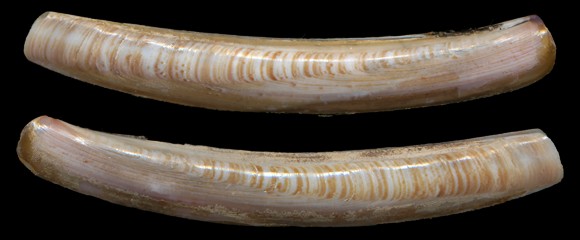
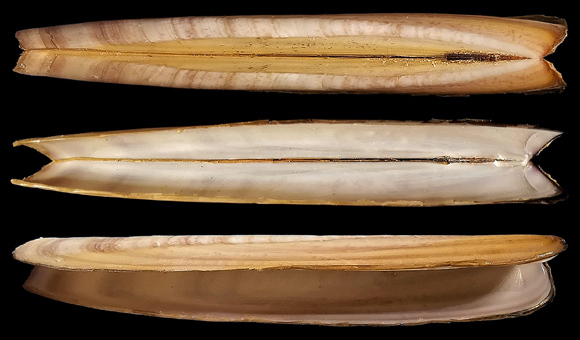
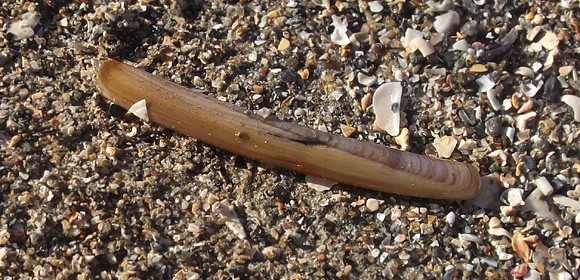
Young specimen of the neighbouring species Ensis directus (Conrad, 1843) preparing to bury itself. – Intertidal, Pointe du Chevet, Saint-Jacut de la Mer, N. Brittany, NW. France. 80mm.
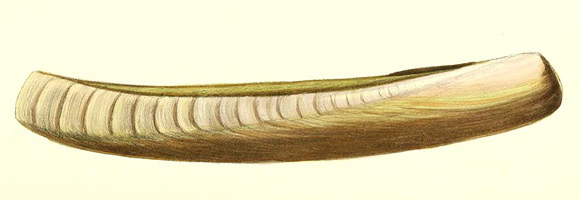
« The sword Solen: shell very narrow, curved, depressed, striped with pale rose or gray beneath the epidermis, straightly truncated at the posterior end ; a little rounded at the anterior end ; dorsal margin sloped out in a curve ; ventral margin convex in an arch. »

